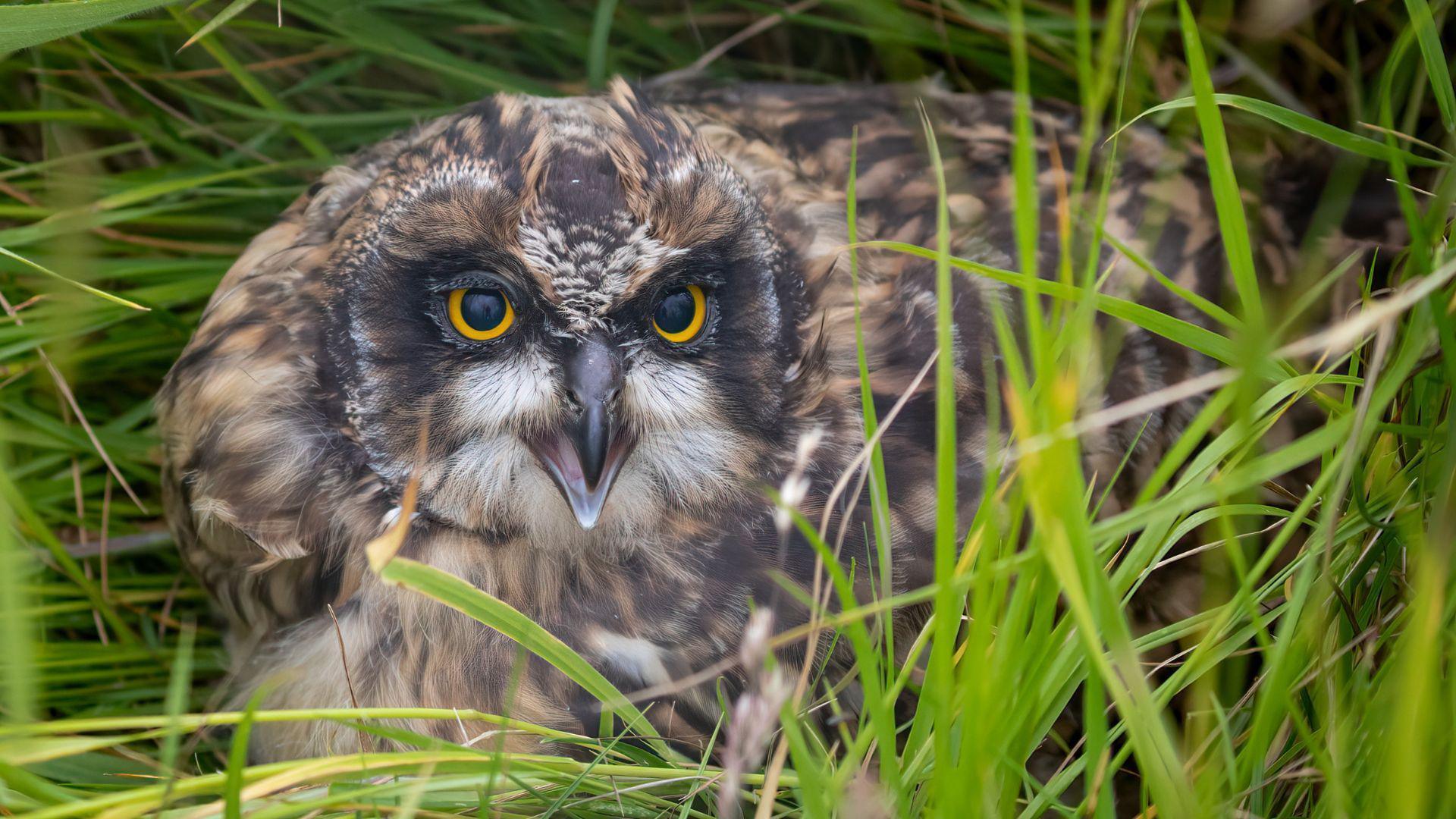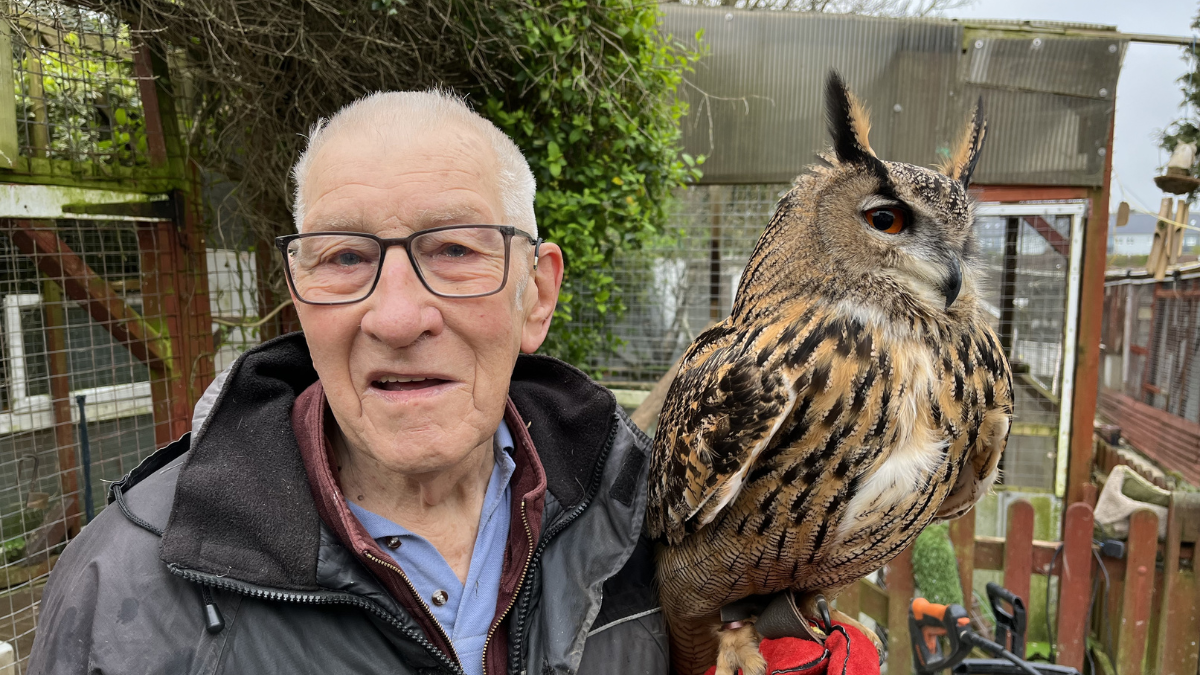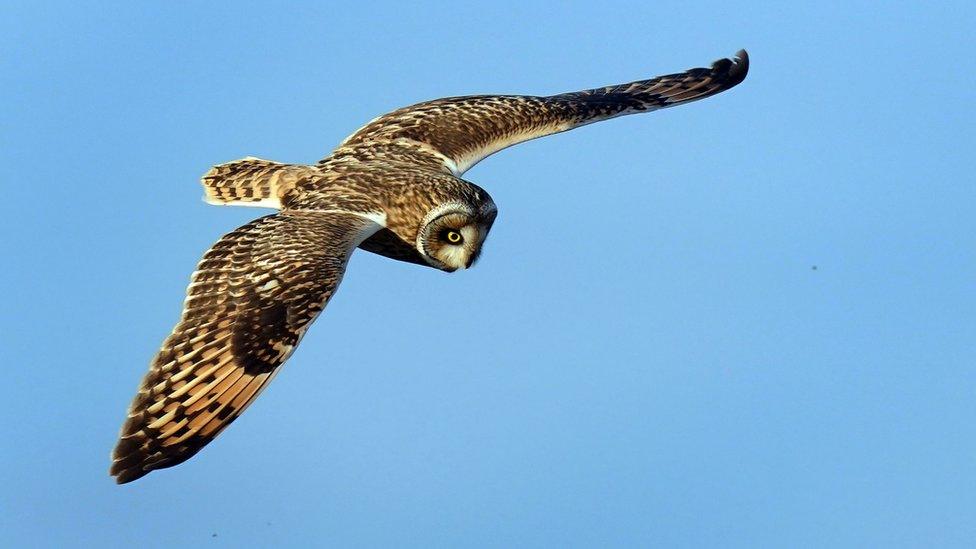Nature reserve welcomes return of rare owl chicks

A baby owl, or owlet, spotted at Elmley Nature Reserve
- Published
A species of owl which usually breeds in Scotland and Russia has produced a brood in an area of Kent for the first time in five years.
Short-eared owls have reared two broods at Elmley Nature Reserve, on the Isle of Sheppey.
The birds often stay at the site for winter before heading north during summer, but weather conditions and food abundance has seen them stay put on Sheppey.
“It starts with insects at the bottom of the food chain," said nature reserve warden Simon Ginnaw. "If you have lots of things wriggling around then there is food for other things."
Barn, tawny, long-eared and little owls are regularly spotted at the reserve. It is hoped that the short-eared owls will stay until the autumn.
Estate manager Gareth Fulton said the short-eared owl chicks have now fledged.
“It’s about making space for all different species," he said.
“Some of our grass is grazed by cattle but some is left long, which is brilliant for things like mice and voles.
“The owls hear the small mammals moving in the grass and then swoop down to pick up their food.”
Short-eared owls - which have brown bodies, pale under-wings and yellow eyes - appear in the daytime and have a broad wing span, meaning they are easy to spot when active.
Follow BBC Kent on Facebook, external, on X, external and on Instagram, external. Send your story ideas to southeasttoday@bbc.co.uk or WhatsApp us on 08081 002250.
- Published9 April 2024

- Published9 January 2023

- Published1 December 2023
